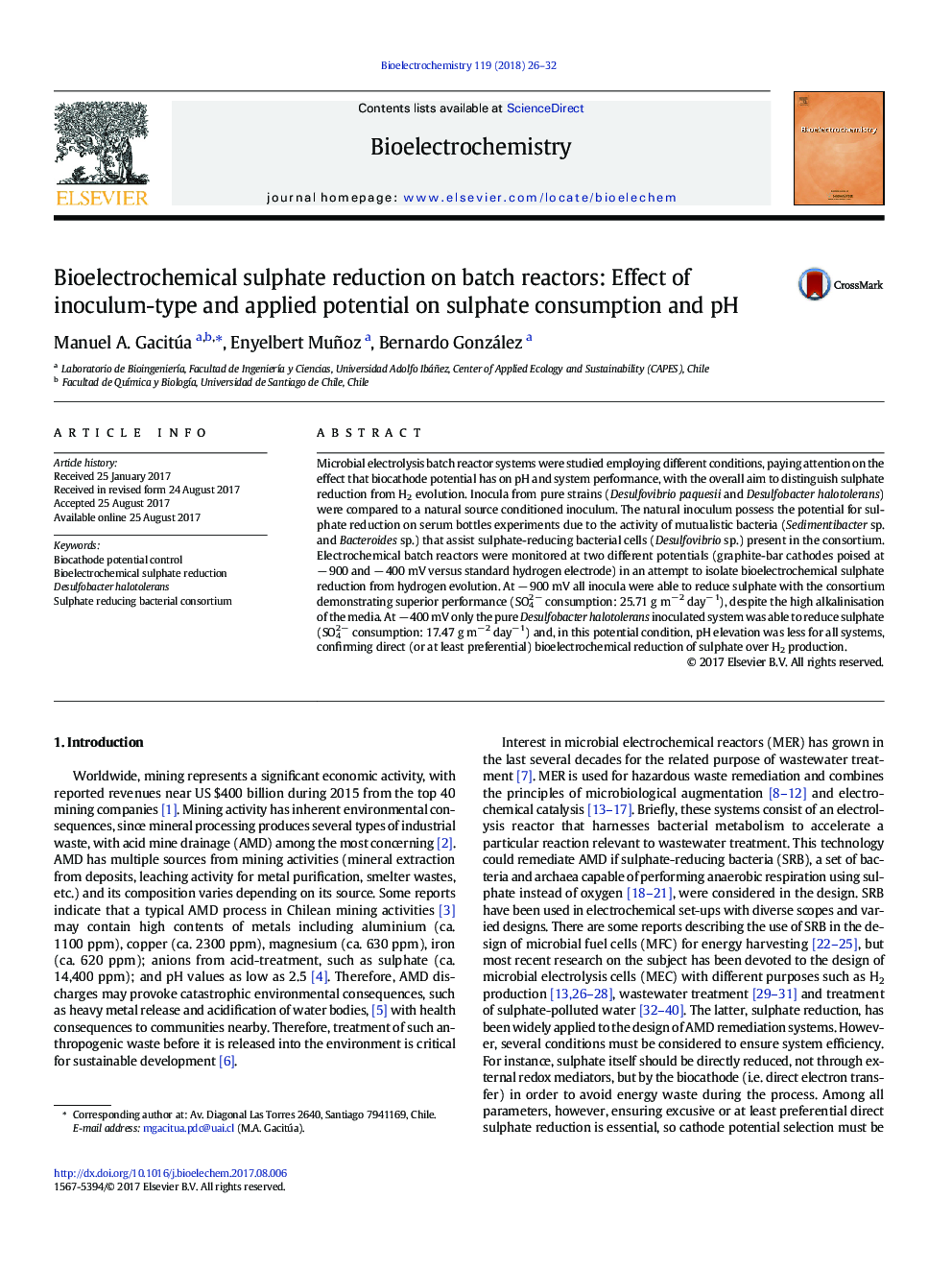| Article ID | Journal | Published Year | Pages | File Type |
|---|---|---|---|---|
| 5144948 | Bioelectrochemistry | 2018 | 7 Pages |
Abstract
Microbial electrolysis batch reactor systems were studied employing different conditions, paying attention on the effect that biocathode potential has on pH and system performance, with the overall aim to distinguish sulphate reduction from H2 evolution. Inocula from pure strains (Desulfovibrio paquesii and Desulfobacter halotolerans) were compared to a natural source conditioned inoculum. The natural inoculum possess the potential for sulphate reduction on serum bottles experiments due to the activity of mutualistic bacteria (Sedimentibacter sp. and Bacteroides sp.) that assist sulphate-reducing bacterial cells (Desulfovibrio sp.) present in the consortium. Electrochemical batch reactors were monitored at two different potentials (graphite-bar cathodes poised at â 900 and â 400 mV versus standard hydrogen electrode) in an attempt to isolate bioelectrochemical sulphate reduction from hydrogen evolution. At â 900 mV all inocula were able to reduce sulphate with the consortium demonstrating superior performance (SO42 â consumption: 25.71 g mâ 2 dayâ 1), despite the high alkalinisation of the media. At â 400 mV only the pure Desulfobacter halotolerans inoculated system was able to reduce sulphate (SO42 â consumption: 17.47 g mâ 2 dayâ 1) and, in this potential condition, pH elevation was less for all systems, confirming direct (or at least preferential) bioelectrochemical reduction of sulphate over H2 production.
Related Topics
Physical Sciences and Engineering
Chemistry
Electrochemistry
Authors
Manuel A. Gacitúa, Enyelbert Muñoz, Bernardo González,
